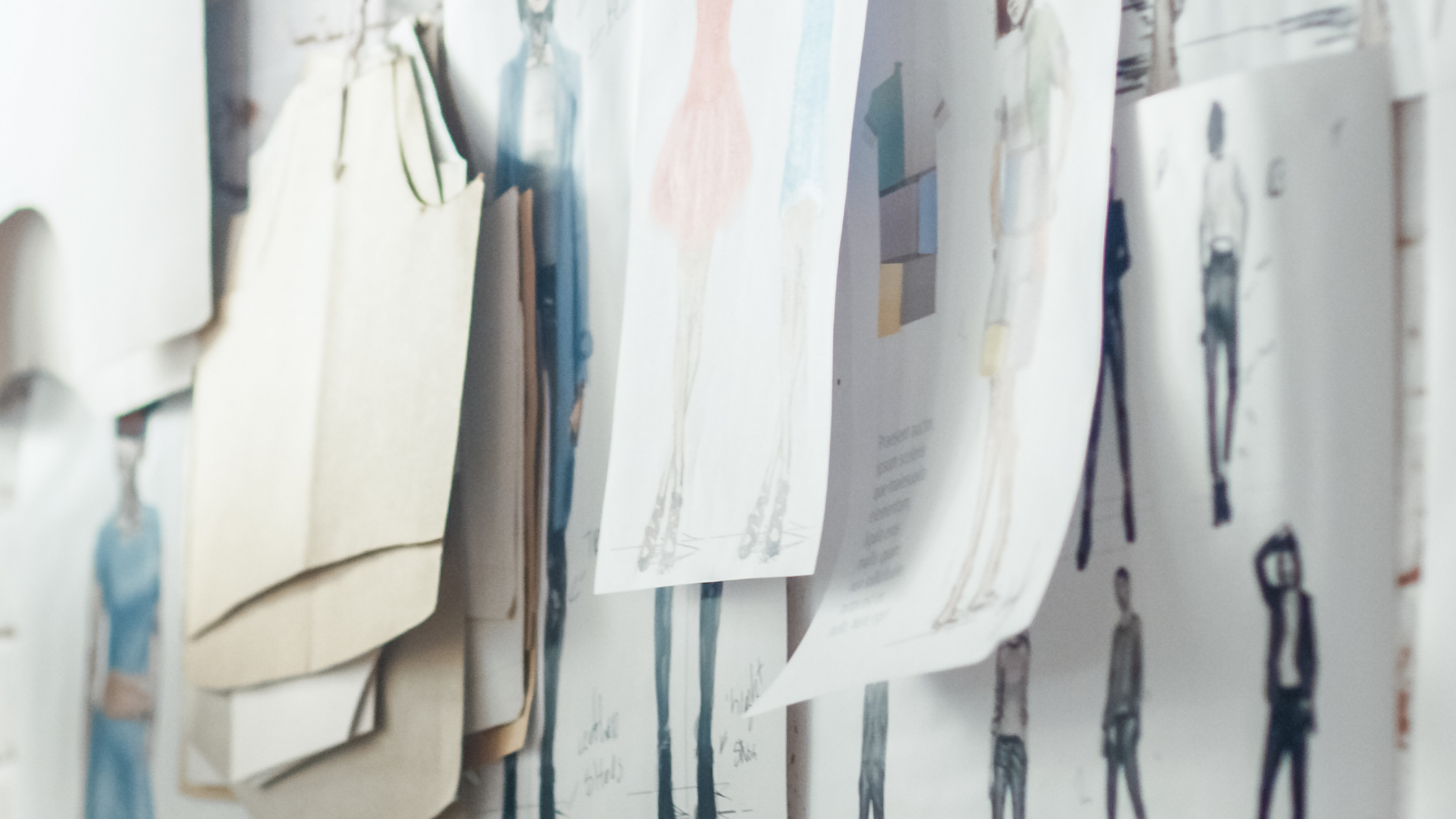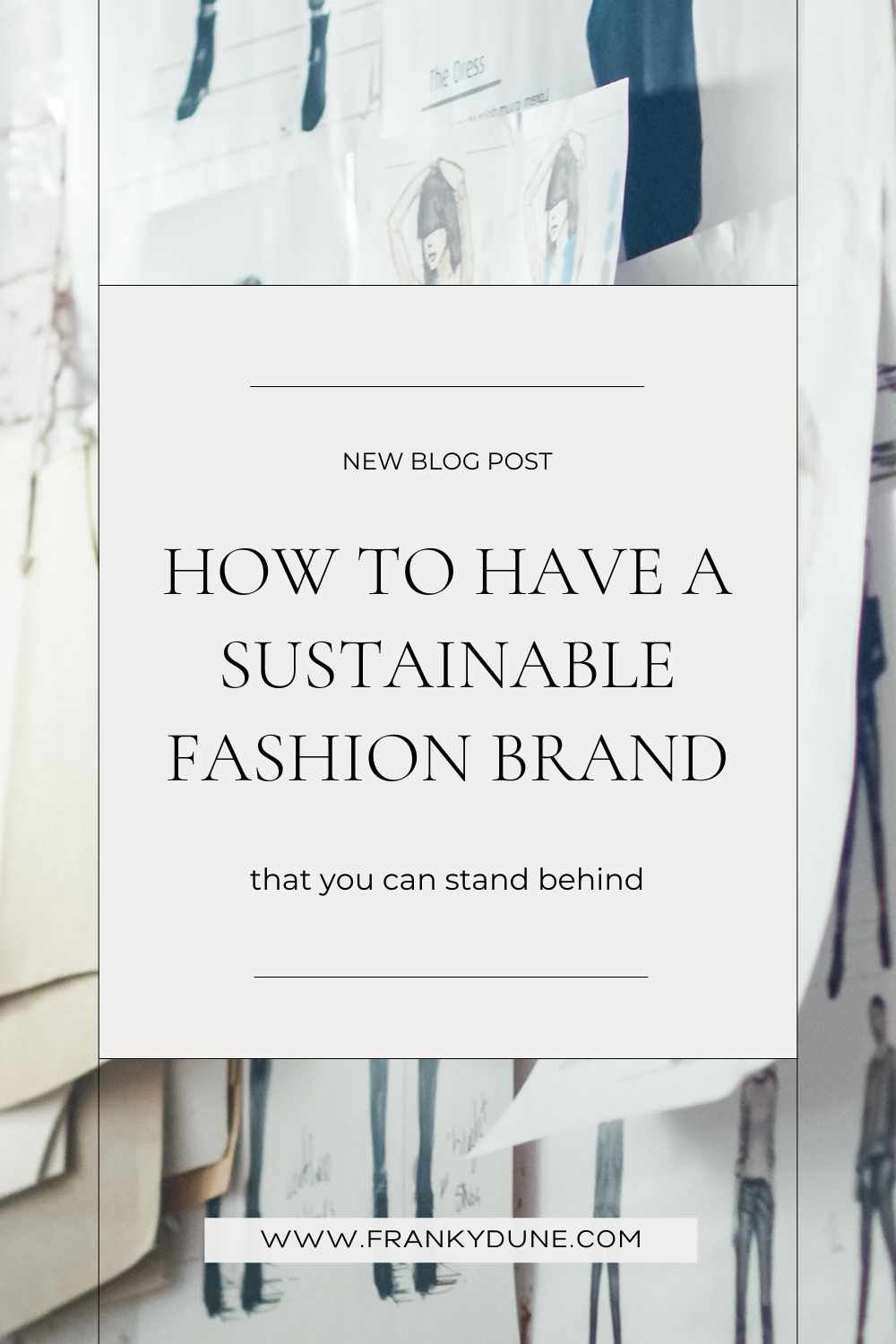How to Have a Sustainable Fashion Brand
When Everyone is Sh***ing on the Sustainability Movement
Yep, that’s the title of my very first YouTube video 😄
Everyone is talking about sustainability, and that has been creating a lot of fatigue and push back around the topic. If you are in the right (or wrong!) Clubhouse room, everyone seems to come up with a whole list of negative things to say about the movement. How you can’t be sustainable for reasons xyz, or you aren’t sustainable for reasons xyz.
I can understand why. Sustainability is a heavy, complicated, multi-dimensional topic. And there are some very valid points out there.
But you know what? No matter what people are saying, your dream is to have a business that fulfils your creative energy and is doing as little environmental damage as possible. You understand that being part of the sustainable movement is a vital piece to the future of fashion.
Here are 3 simple tips for you on how to start your brand in the best way possible.
DESIGN
Tip #1
Sustainability starts with your designs
Do you have an audience?
First off, do you have an audience who WANTS your designs? Are you filling a need or a gap in the marketplace?
Ask around! Show your sketches. Poll instagram + facebook. See if there is a demand / need for the garments you want to produce.
The last thing you want as a designer is to produce and find that out after the fact that your garments aren’t selling. That can be heartbreaking for a designer, and their bank account!
Are your designs versatile?
Next, think about if your design is something that will last multiple seasons? If so, show it! Show the same outfit styled for summer, winter, autumn and spring.
Or, is it specifically for one season? Example a puffer coat for winter? Can you show that styled multiple ways for that one season? Will it work styled up or styled down? Show. It! Consumers love to see their favourite items styled a different way from the designer.
Are you following trends?
Lastly, will your design wear through the trends? Can it live through high-waisted, low-waisted, wide leg, super skinny, cropped, extra long, super puffy, extremely fitted, you get the idea.
Are your designs strictly following on-trend styles? Or will it surf through and be versatile?
FABRIC
Tip #2
Sustainability in your fabric choices
Purchasing sustainable fabrics for your designs is, in my opinion, the only way to go.
Sustainable fabrics include
Crop based fabrics, like hemp, linen, ramie, cotton. Purchasing organically made crop based fabrics will give your garments longevity and the organically grown certification is something a new business should stand behind right from the start of your business.
Cellulose based fabric, like tencel, is made from wood pulp found in sustainable forests. This is a superior fabric choice over viscose or modal because the manufacturing of this fabric is cleaner compared to the other cellulose-based materials.
Try and keep your fabric purchases local
When sourcing fabric for your designs, choose a fabric suppler or manufacturer as close to your home as possible, or at the very least, on your continent, as a way to reduce your company’s carbon footprint. Consider purchasing already-made fabric since it is already on your side of the world anyways. Use it up!
Need help sourcing the right fabric?
Head to the directories of sustainable fabric suppliers specifically offering low MOQ (minimum order quantities) to smaller brands like yours. Our directory is ever-growing with over 100 global suppliers, 50 + ethical garment manufacturers plus we added a Blanks Suppliers directory for brands wanting to find white label suppliers for either stock or POD or dropshipping.
PRODUCTION
Tip #3
Sustainability in your garment production
Garment production can honestly be the hardest part when running a fashion design brand. There are many benefits to having your garments produced locally. You will be able to follow along the production carefully, making sure the construction is done according to your specifications and you will reduce your carbon footprint greatly.
Produce garments locally
Have your garments produced as close to home as possible. What does this look like? Are there any homesewers near you? Can they work closely with you to make the garment as to your specifications?
Can you have sewists come in to your workspace, using your machines to sew the garments?
Quality vs Quantity
My last tips is for you to spend your energy producing quality garments over a high quantity of garments. Knowing your audience (see tip above) will give you insight into how much of what design you should be producing.
The last thing any designer wants is over-produce their designs and have them sit there, not selling. This can be soul-crushing to any designer. If you understand your audience and the need you are wanting to fill, you will have given yourself a much great chance of success.
Quality garments sell.
Quality garments last.
Quality garments provide your brand an awesome reputation.




